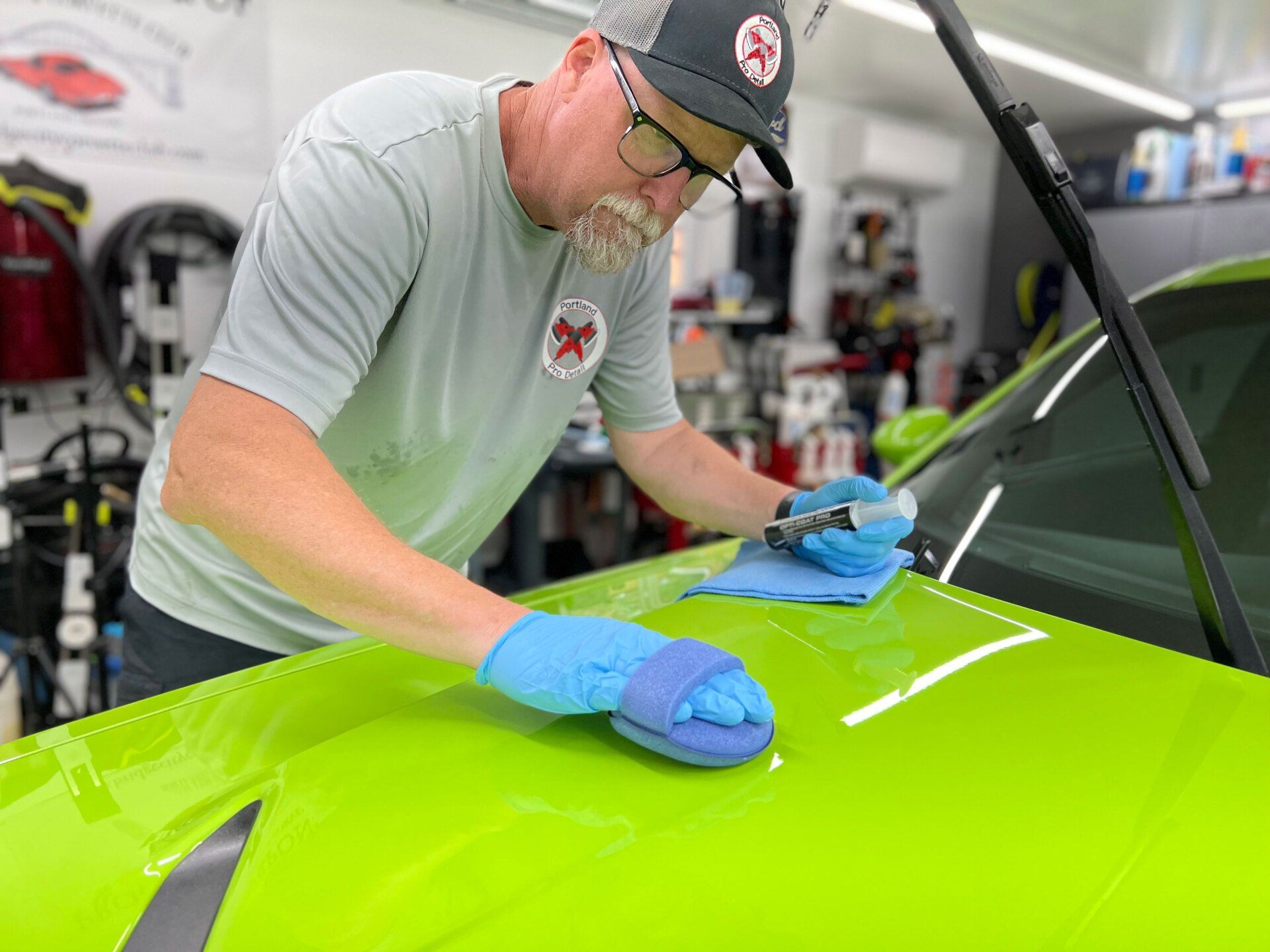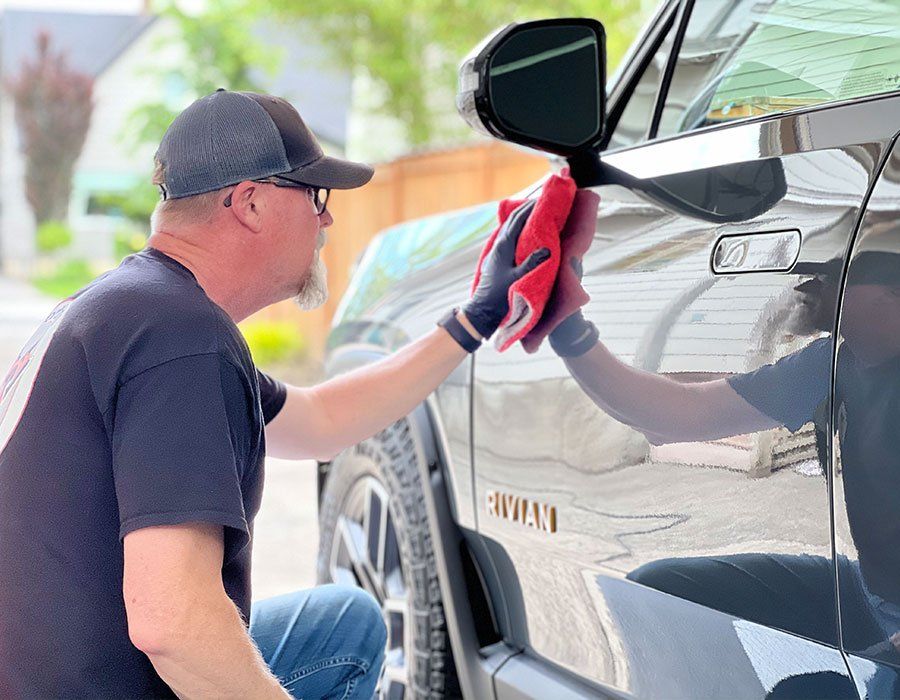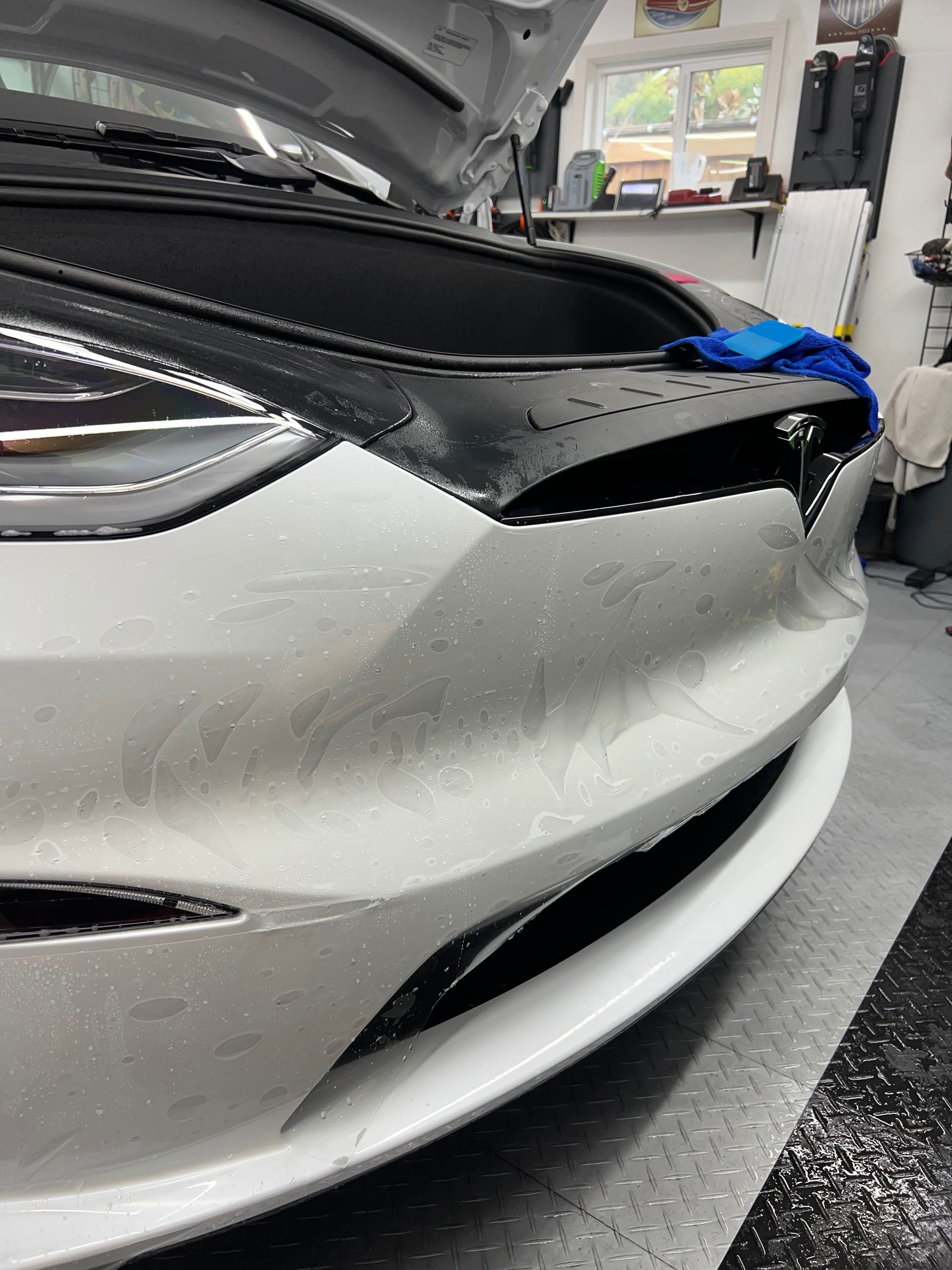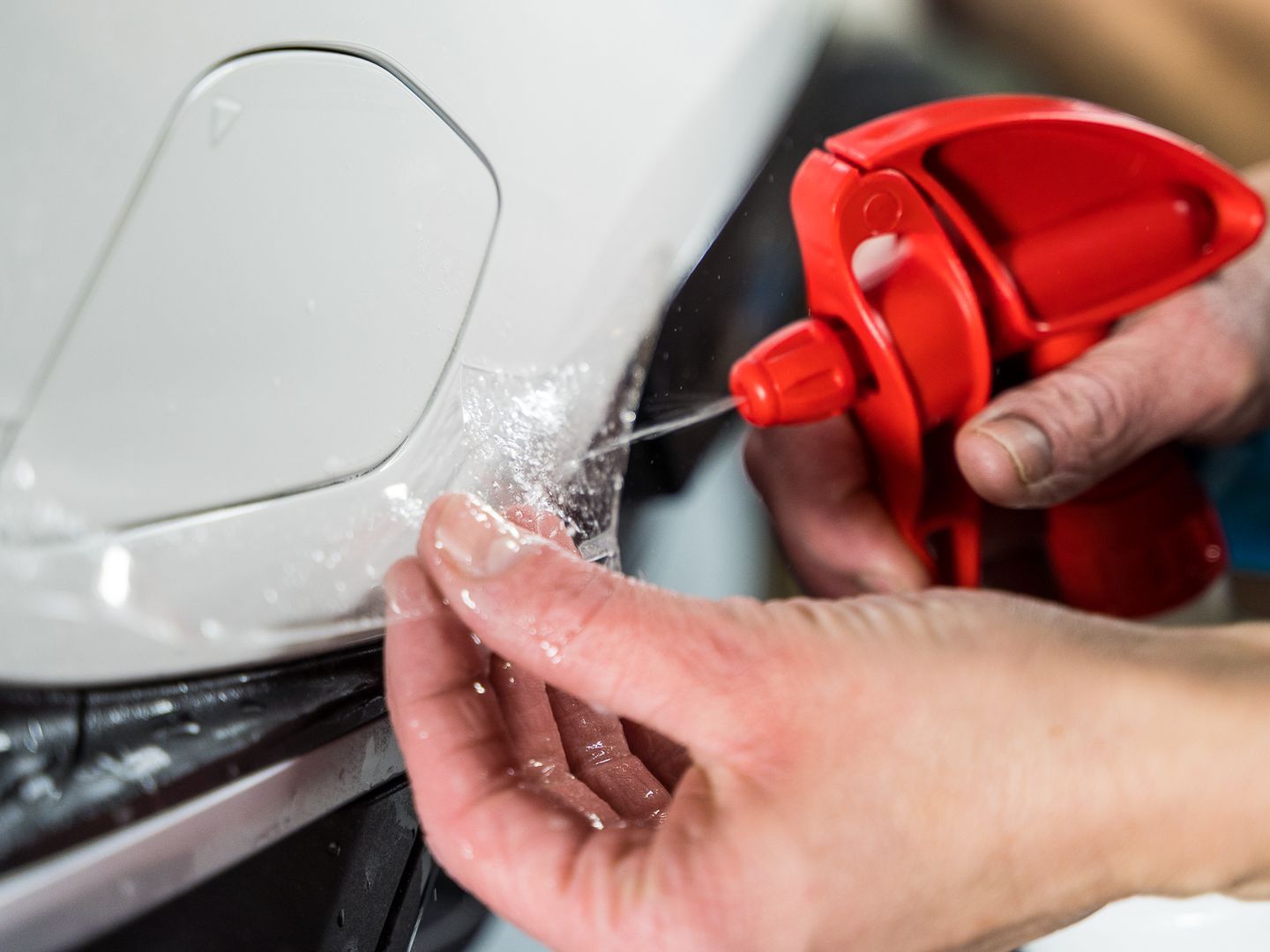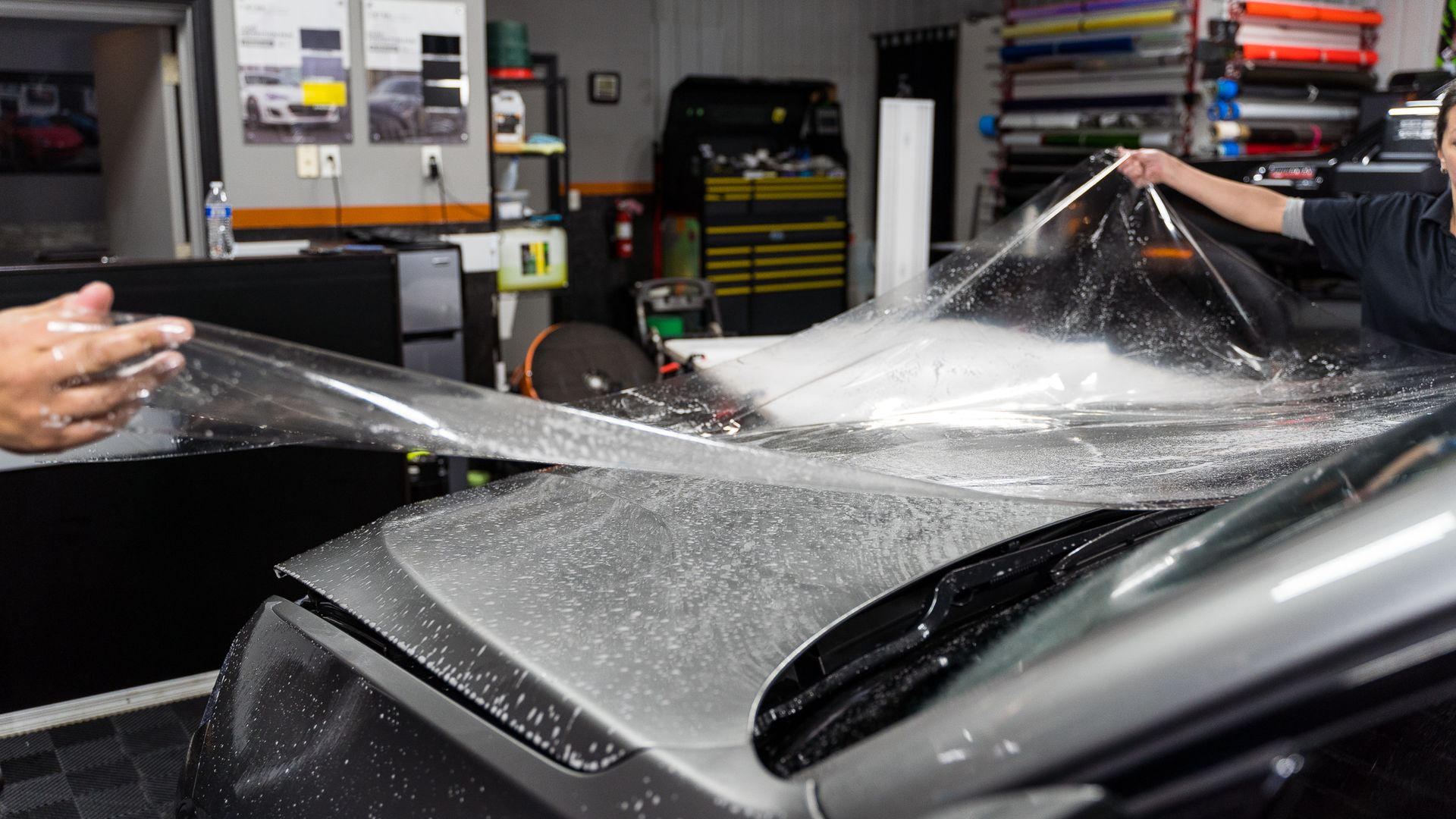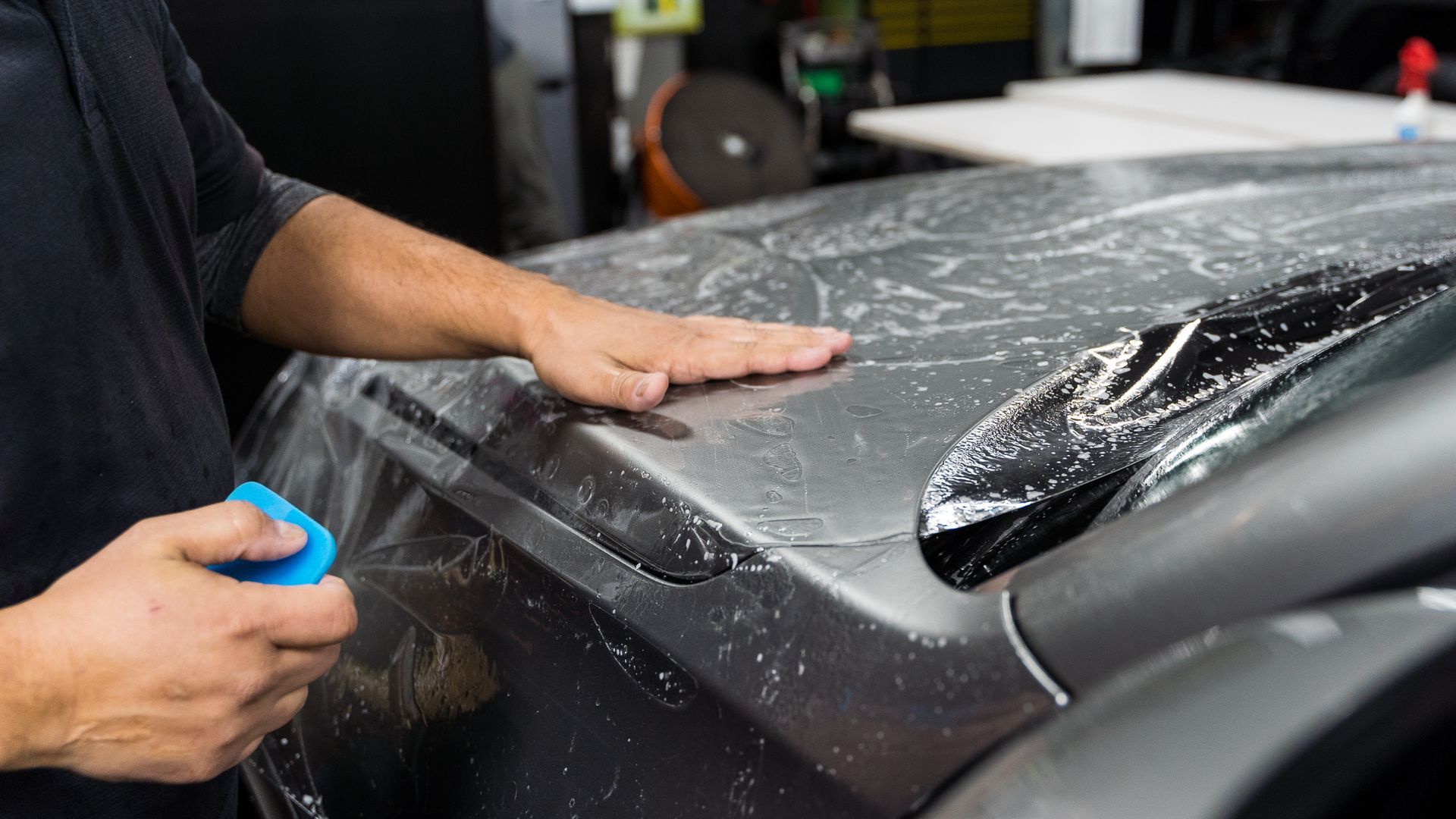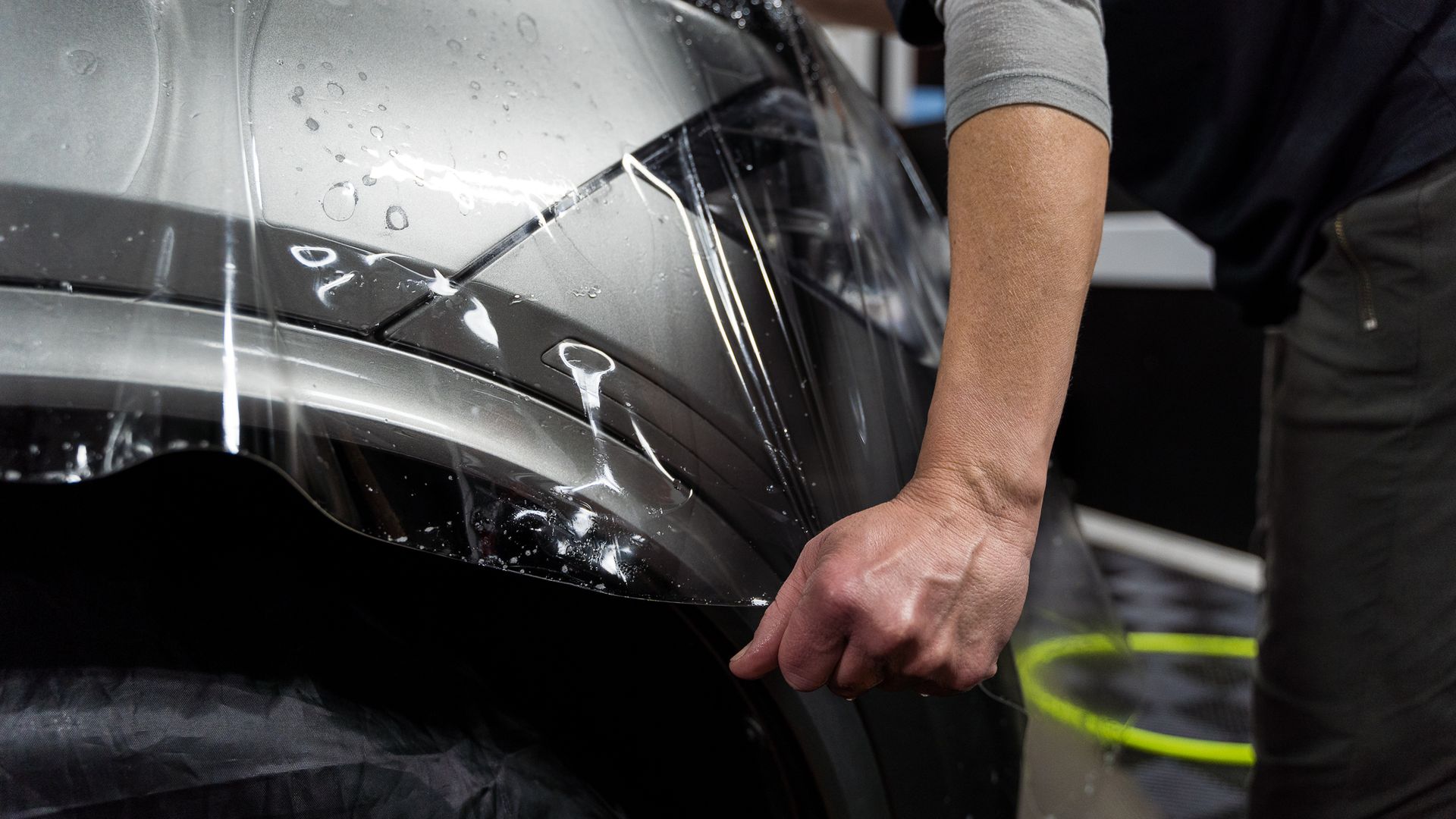How Often Should You Replace or Reapply PPF? Maintenance Guidelines Explained
CALL (503) 444-7415
Paint Protection Film (PPF) might just be the unsung hero of vehicle maintenance, often overlooked until it's too late. If you’ve ever marveled at a car’s flawless exterior and wondered how it stays so pristine, chances are, it's been treated with PPF. This clear barrier not only shields against scratches and environmental damage but can also lend an extra shine to your ride. In this article, we'll dive into how often you should replace or reapply PPF, shedding light on its lifespan and the best maintenance practices to keep that protective film looking as good as new.
Experts recommend inspecting your paint protection film around the 5-year mark, as this is when signs of wear, such as yellowing or browning, may start to appear; however, some detailers advise that PPF can last up to 10 years with proper care, albeit removal before that point might be necessary to avoid difficult removal issues. Regular maintenance and monitoring are key to ensuring the longevity and effectiveness of the film.
Expected Lifespan of Paint Protection Film
Generally, PPF is designed to be a robust shield for your vehicle, offering protection against scratches, chips, and environmental factors. Most high-quality films from reputable manufacturers boast a lifespan ranging between 5 to 10 years. However, this duration isn't set in stone; it greatly depends on various factors that influence the film's performance over time.
Variables Affecting Longevity
To maximize the effectiveness of your PPF and ensure longevity, it helps to understand key variables that can significantly impact its lifespan. For instance, consider sun exposure. If your car often basks under harsh sunlight, the UV rays can lead to deterioration. This degradation not only brings about yellowing or fading but can also diminish the film’s adhesion to the surface of your vehicle. Another significant factor is climate. Vehicles in regions experiencing extreme heat or harsh winters are subjected to conditions that wear down PPF faster than those in temperate zones. Think about it—when icy roads lead to extra grime or when intense sunshine causes rapid evaporation and wear, your film may start showing signs sooner rather than later.
Driving habits also play a crucial role. If you're an off-road enthusiast navigating rough terrain or frequently driving along gravel roads, your PPF will encounter more abrasion, leading to increased wear and potential damage compared to someone who primarily drives on smooth city streets. Lastly, let's talk about maintenance routines. Regular inspections and gentle cleaning techniques can extend the life of your PPF considerably. Neglecting proper care allows contaminants and dirt to settle into the film, which can lead to premature degradation and unsightly blemishes.
Knowing these variables gives you a better sense of what's at stake with PPF. Recognizing the signs of wear early helps mitigate further challenges down the line while enhancing your overall driving experience by maintaining both protection and aesthetics for your vehicle. As we explore this topic further, understanding when it's necessary to replace or reapply is essential for ensuring continuous optimal performance.
When to Replace Your PPF
Recognizing when it’s time to replace Paint Protection Film (PPF) can save your vehicle’s paint job from unnecessary damage. It’s essential to perform regular checks on the film covering your car. This proactive approach allows you to catch signs of wear before they escalate into costly repairs.
- Inspect for Yellowing or Browning: First, you'll want to carefully examine the PPF for any discoloration. UV rays are relentless and can cause the film to yellow or brown over time, dulling its effectiveness and appearance. If, during your inspections—usually recommended every month—you notice any fading or a shift in color, it's a clear indication that the film is degrading and may need replacing. This discoloration typically arises about three to five years after installation due to prolonged exposure to sunlight. Keep an eye out; this stage signifies that the protective capabilities of your PPF are waning.
- Feel for Bubbling or Peeling: The next step involves tactile inspection; run your fingers along the edges and surfaces of the film. A smooth touch should indicate good adhesion. If you feel any bubbles or peeling—particularly near the edges—it reveals that the adhesive might be failing, leading moisture to trap beneath and causing further damage. Bubbling is often attributed to poor installation techniques or extreme temperature fluctuations. If detected early, these issues can usually be remedied without needing full replacement, but be vigilant: failure to address this can lead to peeling that compromises not just the film but also your car's paint underneath.
- Note Any Surface Scratches: Finally, look closely for any physical imperfections on the surface of your PPF. Accumulated scratches can make it look dull or worn out, necessitating premature replacement. While many modern films feature self-healing technologies designed to reduce minor scratches automatically, a noticeable decline in these abilities indicates it may be time for new film altogether. Regular care in cleaning—using soft cloths and non-abrasive products—can help minimize surface scratches over time.
By routinely checking for discoloration, assessing adhesion integrity, and monitoring surface condition, you ensure that your protective film works as intended. This attention to detail lays a solid foundation for understanding where best to apply new layers of protection on your vehicle.
Key Areas for PPF Application
Not all parts of your vehicle have the same risk level for damage, which makes it essential to prioritize high-impact zones for Paint Protection Film (PPF) application. This targeted approach not only provides maximum protection but also optimizes the longevity of your vehicle’s aesthetic appeal. By strategically applying PPF to the areas most susceptible to wear and tear, you can safeguard your investment without overwhelming expenses.
High-Risk Zones
When considering PPF, focus your efforts on covering areas like the front bumper, hood, side mirrors, and fender areas. These locations often encounter road debris that can lead to rock chips or scratches. The front bumper and hood take the brunt of impacts from small stones kicked up by other vehicles, particularly during highway drives. Side mirrors regularly face potential scratches from narrow parking spaces where contact with other vehicles is likely. In fact, statistics show that nearly 60% of PPF damage occurs on the hood due to direct exposure to the elements combined with road debris. Protecting these areas is a matter of enhancing both their durability and visual purity.
Optional Areas
Some car enthusiasts opt to extend their PPF coverage to include additional areas such as door edges, handles, and rear wheel arches. These sections can exhibit signs of wear from daily usage, making them good candidates for extra protection. For instance, door edges often suffer from scuffs when used frequently, and adding PPF here prevents unsightly marks that can mar your vehicle’s appearance over time.
By understanding where your vehicle is most vulnerable and investing in quality PPF application in those key areas, you are effectively bolstering its defense against inevitable wear and tear. As we continue our discussion, it's important to consider how external conditions can further impact the effectiveness and longevity of your paint protection strategy.
Environmental Impact on PPF
The environment plays a crucial role in determining the longevity and effectiveness of Paint Protection Film (PPF). Each element, from the sun's rays to weather patterns, influences how well this protective shield performs over time. As motorists, understanding these nuances allows us to make informed decisions about upkeep and replacements.
- Sun Exposure: One of the primary culprits affecting PPF is sun exposure. UV rays are relentless; they break down the chemical structure of the film itself. This degradation leads to cosmetic issues like yellowing and compromises the film’s durability, making it less effective at protecting your vehicle from scratches and chips. In locales with intense sunlight exposure—think sunny states like Arizona or California—vehicles parked outdoors regularly face quicker deterioration of their PPF. It’s fascinating how a simple choice, like whether to park in a garage or out in the open, can significantly affect your car's appearance and long-term value. However, it's not just the sun that takes its toll; other weather conditions have a say too.
- Weather Conditions: Enter weather conditions that bring their own set of challenges for PPF. Snow and ice, common in colder climates such as Michigan or New York, introduce road salt into the mix—a highly abrasive element that negates some of PPF's protective benefits. When vehicles are subjected to melting snow mixed with salt, the film endures wear and tear more rapidly. This shortens the lifespan of PPF and increases maintenance costs, as you'll find yourself replacing or reapplying more often than if you were in a milder climate.
It's essential to recognize that different environments require tailored care strategies for your vehicle's upkeep. Understanding these factors enables you to enhance not only the life of your PPF but also safeguard your entire vehicle while minimizing environmental impacts. Additionally, considering these external elements encourages us to adopt proactive measures. For instance, using a car cover when parked outside could be an easy way to shield your vehicle from damaging UV rays and harsh weather conditions. Awareness of these environmental impacts allows vehicle owners to maintain their cars effectively while contributing positively to sustainable automotive practices. With a keen understanding of how environmental factors affect PPF longevity, we can now turn our attention to the essential techniques for applying this protective film correctly.
Proper Application Techniques
Proper application is crucial for ensuring that PPF performs at its best. The outcome not only affects the appearance of your vehicle but also its protection against environmental challenges. Ensuring a flawless finish is essential, as any bubbles or creases that arise during installation can compromise the film's integrity and your car's protective barrier.
Professional Installation
While some may feel inclined to tackle a DIY installation, opting for professional assistance often yields superior results. Professionals are adept at working with PPF and have honed their skills and techniques over time. They ensure the film is applied without bubbles or creases, maximizing its protective qualities against scratches, chips, and other potential damage your vehicle may encounter on the road.
One advantage of engaging an experienced installer is that they use specialized tools designed to eliminate air bubbles and achieve a snug fit. Tools such as squeegees help smooth out the film onto the vehicle's surface, pushing out any trapped air efficiently. The difference is akin to having a master chef prepare your meal—not only do they know the best ingredients to employ, but they also understand how to cook them to perfection. If you decide to explore DIY options instead, it's critical to take thorough preparatory steps before applying the PPF because adherence relies heavily on surface preparation. Cleaning the vehicle’s paintwork with an isopropyl alcohol solution helps remove contaminants that could impede bonding. Using the wet application method with lubricants allows the film to slide into position more easily and reduces friction that might lead to tears or misalignment.
Regardless of how you choose to apply PPF, mastering these techniques will lay a strong foundation for its performance. This attention to detail not only enhances the longevity of your protective film but also paves the way for understanding how to ensure it lasts longer in subsequent care practices.
Tips for Maximizing PPF Lifespan
Extending the lifespan of your Paint Protection Film (PPF) is all about understanding the art of maintenance. Just like caring for any important asset, you need to weave together regular cleaning habits and preventive measures into your routine. Using the right products plays a pivotal role in this journey. For instance, opting for specialized PPF maintenance sprays or sealants will ensure that your film stays protected while remaining free of dirt and grime.
- Routine Cleaning: Regular washing is essential for maintaining clarity and integrity in your PPF. It’s crucial to choose a pH-neutral car shampoo; harsh chemicals can wreak havoc on the film, leading to degradation and discoloration over time. A gentle wash with a microfiber cloth minimizes the risk of scratches while effectively removing dirt. Think of routine cleaning as giving your PPF a refreshing shower—cleaning off pollutants before they have a chance to set in deep. Moreover, consider adopting a two-bucket washing method, where one bucket holds soapy water and the other fresh rinse water. This practice prevents dirt from being transferred back onto the film after you've cleaned it, ensuring a more thorough cleanse each time. Incorporating this simple technique into your washing routine can significantly enhance the lifespan of your PPF.
- Periodic Maintenance: Moving beyond basic cleaning, applying protective sealants annually is another significant step toward prolonging the life of your PPF. Experts agree that these sealants provide an extra layer of UV protection while repelling dirt buildup. Indeed, surveys reveal that vehicles receiving regular applications of protective sealants enjoy up to 25% longer PPF life compared to those that don’t. Remember, consistently taking these precautions allows your PPF not only to maintain its appearance but also to function properly by protecting against scratches and environmental damage. By making these proactive strategies habitual, you are essentially investing in your vehicle’s long-term beauty and durability.
Continuing care does not stop at washing and sealing; additional protective measures can further extend the longevity of your PPF while amplifying its performance. In conclusion, prioritizing routine cleaning and periodic maintenance is vital for ensuring that your Paint Protection Film performs at its best and lasts long enough to protect your investment.
Elite Paint Protection Film Services in Portland, OR
At Portland Pro Detail, our expert paint protection film (PPF) services are designed to shield your vehicle from rock chips, scratches, and road debris—without compromising its appearance. Whether you're cruising city streets or taking on the open road, our precision-installed PPF keeps your paint looking showroom-fresh mile after mile. Based in Portland, we’re here to help you drive with confidence and long-lasting protection. Reach out today to schedule your PPF consultation!

